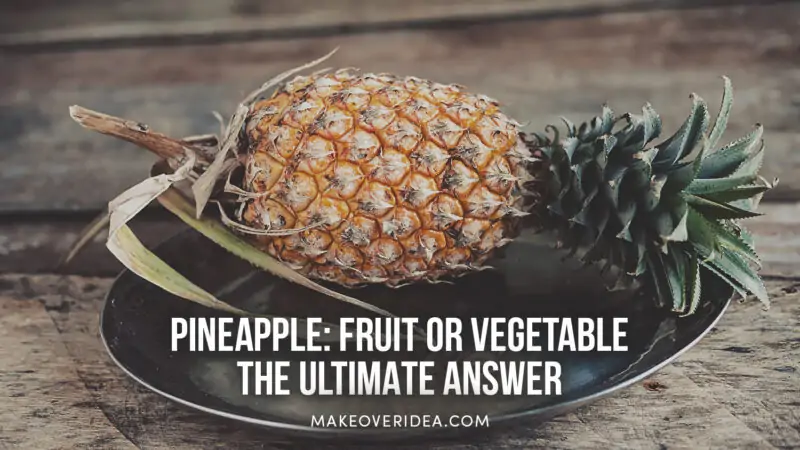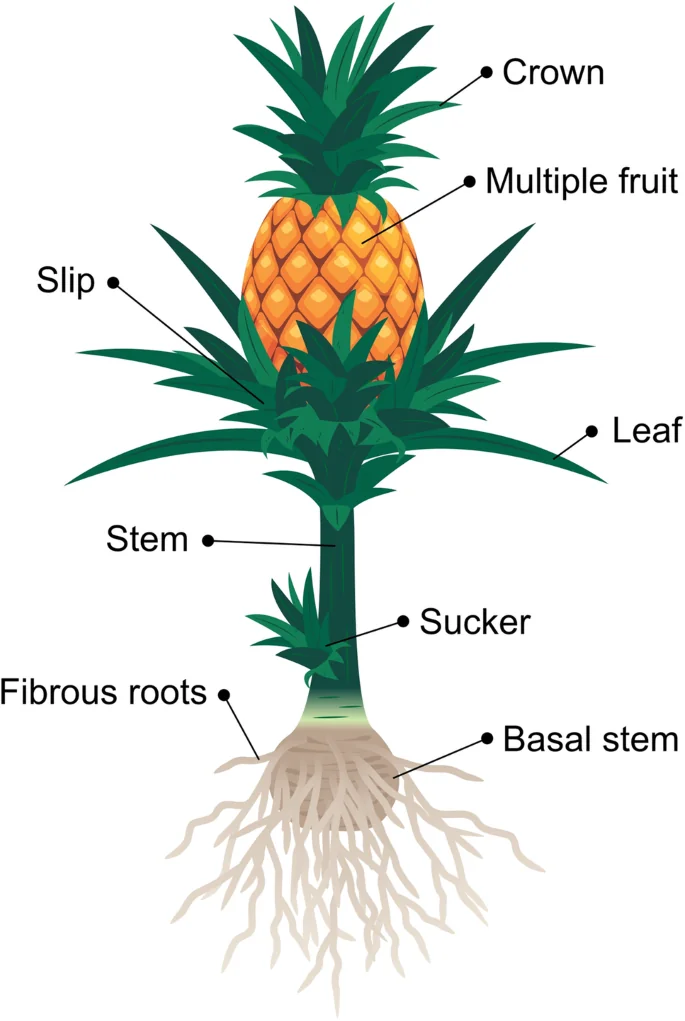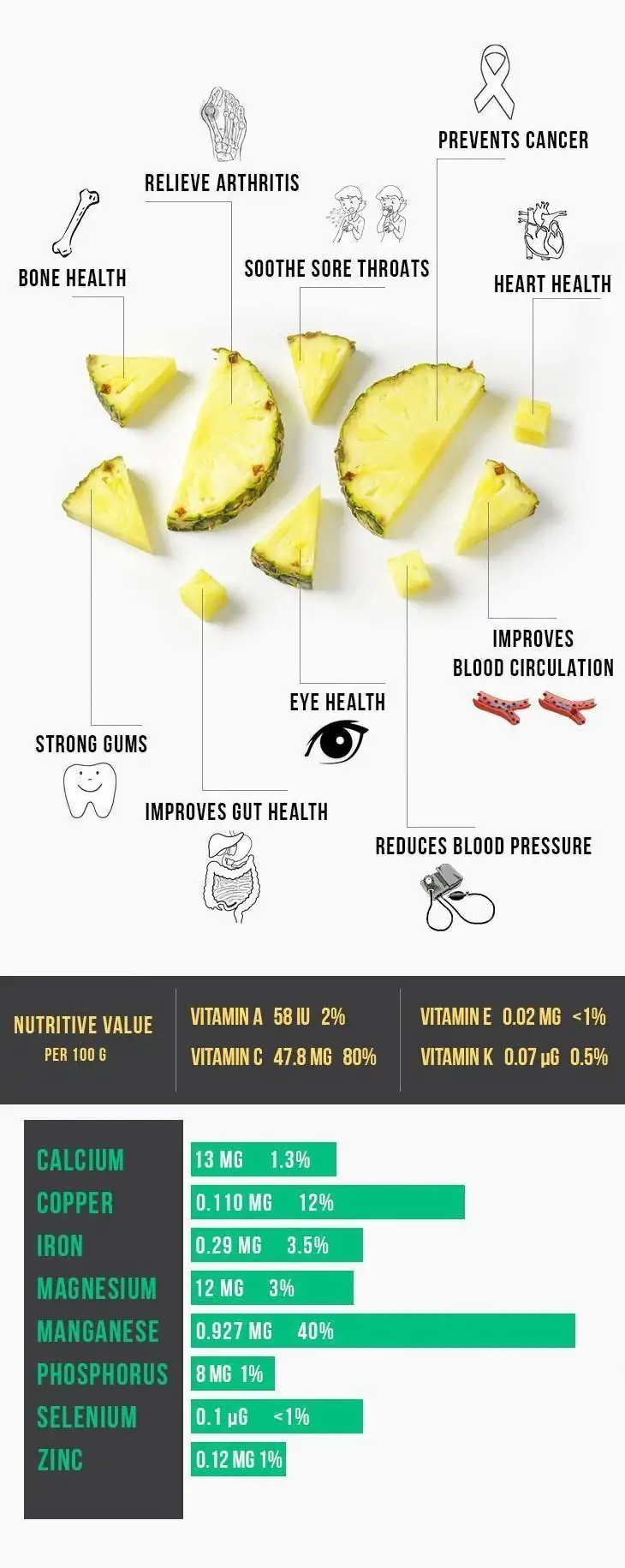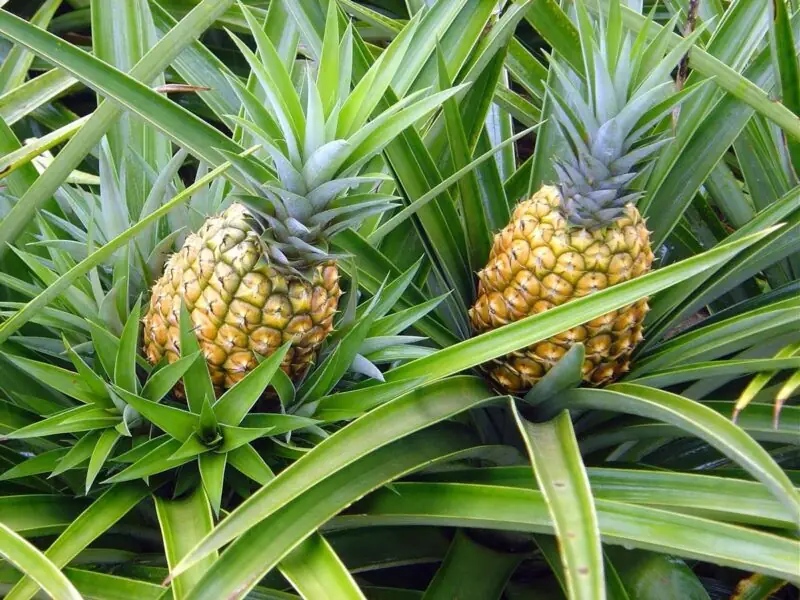Is Pineapple a Fruit or Vegetable? Debunking the Myth

Introduction: Is Pineapple a Fruit or a Vegetable?
Pineapple is a tropical fruit that graces our plates, pizzas, and salads. But have you ever wondered whether it’s a fruit or a vegetable? The answer might surprise you.
Is Pineapple Actually a Vegetable? Exploring the Facts
Let’s get one thing straight: pineapple is not a vegetable. It belongs to the Bromeliaceae family and comes from an ovary flower stem. Thus, botanically speaking, it’s classified as an edible multiple fruit.
But here’s where things get interesting: pineapples are sometimes referred to as vegetables in culinary contexts since they’re used like veggies in some dishes.
For example, savory cooks often use canned pineapple chunks in stir-fries for sweetness and texture or grilled slices of fresh pineapple on top of meat before grilling for contrast with acid levels and juiciness. So maybe we can say that pineapples straddle both worlds of fruits AND vegetables!
Pineapple’s Classification: A Fruit with a Berry Twist

As mentioned earlier, pineapples are classified as edible multiple fruits because they develop from several flowers that fuse together into one juicy berry-like formation embedded inside their tough outer shell (technically known as bracts). Inside each segment grows smaller individual berries called ‘fruitlets,’ which all coalesce into the whole big juicy mass that most people tend to think about when shopping for ripe yellow spiky pineapples at supermarkets.
The shape of a pineapple reminds us more of an oval-skewball-shaped football met by a roundish object, usually less than the size of a large apple. That being said, let’s focus back on its classification: fun facts include how unlike other classic berries (raspberries, blackberries, blueberries, and strawberries), who collectively grow as drupes per plant, this centuries-old botanical superstar has been unique compared to fellow tropical fruited stars like papayas, mangoes, and passion fruits.
Pineapple Plants: How Do They Grow and What Makes Them Unique?
Pineapple plants are an interesting sight to behold. They thrive in warm climates such as Southern Asia and Pacific Islander countries, where they can grow year-round outdoors or in large greenhouse systems during colder months.
In their natural habitat, they’re typically grown on large plantations with plants nicely spaced out to maximize sunlight exposure. The plant produces up to 200 flowers at a time at the top of the stalks, which form into that berry shape known from common grocery stores worldwide.
What makes pineapple plants unique is their hardiness – mature pineapples have tough fibrous exterior peels providing easy protection from predators scavenging for juicy rewards. On top of that, fresh pineapple salads composed of sliced fruit showcase a bumpy texture, offering a crispy bite that is unsurpassed by other comparable edible marvels.
Health Benefits: What Makes Pineapple a Nutritional Powerhouse?

Beyond being delightfully tasty (especially when ripened naturally or grilled!), pineapples boast major health benefits:
- Aiding digestion – the bromelain enzyme it contains helps break down proteins in foods eaten alongside.
- Boosting immunity – thanks to its high Vitamin C content.
Besides these awesome attributes, pineapples also contain higher amounts of thiamin, also known as Vitamin B1, a nutrient important for converting food energy within cell structures and membranes.
If you’re looking for ways to incorporate this delicious fruit into your diet, consider trying adding some fresh slices to yogurt bowls for breakfast, paired together with berries and nuts around cored spheres with delicate membrane tissue gently removed before consuming. Or, use canned variants pureed within homemade jelly or jams for desserts like ice cream toppings served atop oven-baked brie.
Can You Eat Pineapple as a Vegetable? Creative Culinary Uses
While we’ve established that pineapple is botanically classified as a fruit, it’s still used like a vegetable in many savory dishes.
For instance, you can use crushed pineapple in coleslaw or whip up some refreshing salsa featuring diced fresh chunks of tropical delight. Alternatively, cooking options include incorporating grilled slivers inside quesadillas and topping pizzas to enhance overall flavors for more balanced tastes across bites.
Another popular way to address sweet tooth cravings is to bake pineapple with maple syrup, sea salt, and butter drizzled over it for caramelization. Served with vanilla ice cream, each scoop mixed with pineapple provides ultimate satisfaction and indulgence.
Does Pineapple’s Collection of Berries Make It Unique?

Yes! Unlike average berries, which develop from one ovary within flowers’ petals to form a single fleshy structure known as a “drupelet,” pineapples are comprised of clusters of hundreds or even thousands of small independent fruitlets when fully pollinated. This true marvel of a fruit species is enjoyed worldwide, gracing both dessert and savory dishes.
This unique feature gives pineapple its distinct texture and sets it apart from other fruits in terms of culinary versatility.
You can use the juicy fruit to make refreshing drinks like pineapple juice or smoothies, add it to cereal bowls as a sweet accompaniment, and even grill slices for garnish on cocktails! The possibilities are endless with this tropical treat.
FAQ: Common Questions About Pineapples
Botanically speaking, pineapple is classified as an edible multiple fruit with berry-like fruitlets inside each segment formed by fusing together several flowers. However, it’s sometimes referred to as a vegetable in culinary contexts since some recipes incorporate its inherent sweetness, especially after cooking.
To ensure you choose ripe pineapples ready to be consumed, they should give a soft yield when gently squeezed, and their hulls should display a nice golden yellow color after harvest. Underripe pineapples with green skins can be very acidic, unpleasantly sour, and less enjoyable in terms of taste.
While you may not see them being sold at grocery stores, pineapple leaves are often used for traditional woven basket structures or beautiful ornamental displays in homes. Some people might use mashed-up leaves for artisanal papermaking products.
Conclusion: Embracing Pineapple as a Fruit and More
In conclusion, pineapple offers great taste enjoyment and versatile gourmet potential, with numerous health benefits like thiamin, increased digestion, and energy efficiency, also aiding in the functioning of inner organs. It represents a special place in the hearts of people worldwide with its unique appearance and ability to bring people together under a culture of shared cuisines in both dessert and savory dishes.
So, the answer to this question may not be cut-and-dried, but regardless of its classification, pineapple remains a beloved fruit for its culinary applications and nutritious properties!